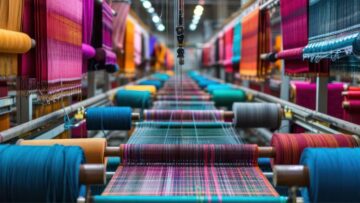Achieving 30 per cent growth compared to 2020-21, India’s apparel export remained US $ 16.01 billion in 2021-22. It is approximately 4.4 per cent of India’s total exports.
Addressing The Fashion Meet Expo 2022, event of Apparel Export Promotion Council (AEPC) and Sowtex, Minister of State for Textiles Darshana Jardosh said, “We are happy to see that accumulative apparel export for the period April-March 2021-22 is US $ 16,018.3 million showing a positive growth of 30.4 per cent compared to the same period last year.”
She said that the export opportunities have also been enhanced via signing of various FTAs with important trade partners for India including UAE, Australia and few others – with UK and Canada in pipeline and talks ongoing for further enhancing the efficacy of Japan and Korea CEPA.
As per a latest report of Wazir Advisors, US, a core market for Indian apparel exporters, is witnessing good growth in apparel sale. In March 2022, US monthly apparel store sales are estimated to be US $ 17 billion, which is 4 per cent higher than March 2021. On YTD bases, the sales are 15 per cent higher than 2021.
In February 2022, US apparel imports stood at US $ 7.5 billion, which is 39 per cent higher than in February 2021. China’s share in the US market has reduced by 6 per cent since 2019, whereas India’s share has increased by around 1 per cent since 2019.
In India’s apparel export basket, USA’s share has increased by 7 per cent, whereas UAE’s and UK’s share have declined by 3 per cent and 1 per cent, respectively, since 2019.
EU’s apparel imports in 2021 registered 6 per cent growth over 2020 values though it remained about 5 per cent lower than 2019.
Geared up for further growth of Indian apparel export, Narendra Goenka, Chairman, AEPC said, “We can assure that the ‘Brand India’ products are sustainable and meet all social and environmental compliances as per the import requirements of the respective countries. Council is taking rigorous efforts towards promoting ‘Brand India’ through various global platforms, showcasing its strength on sustainability, circularity, ethical sourcing and manufacturing, labour standards, women employment, etc.”







